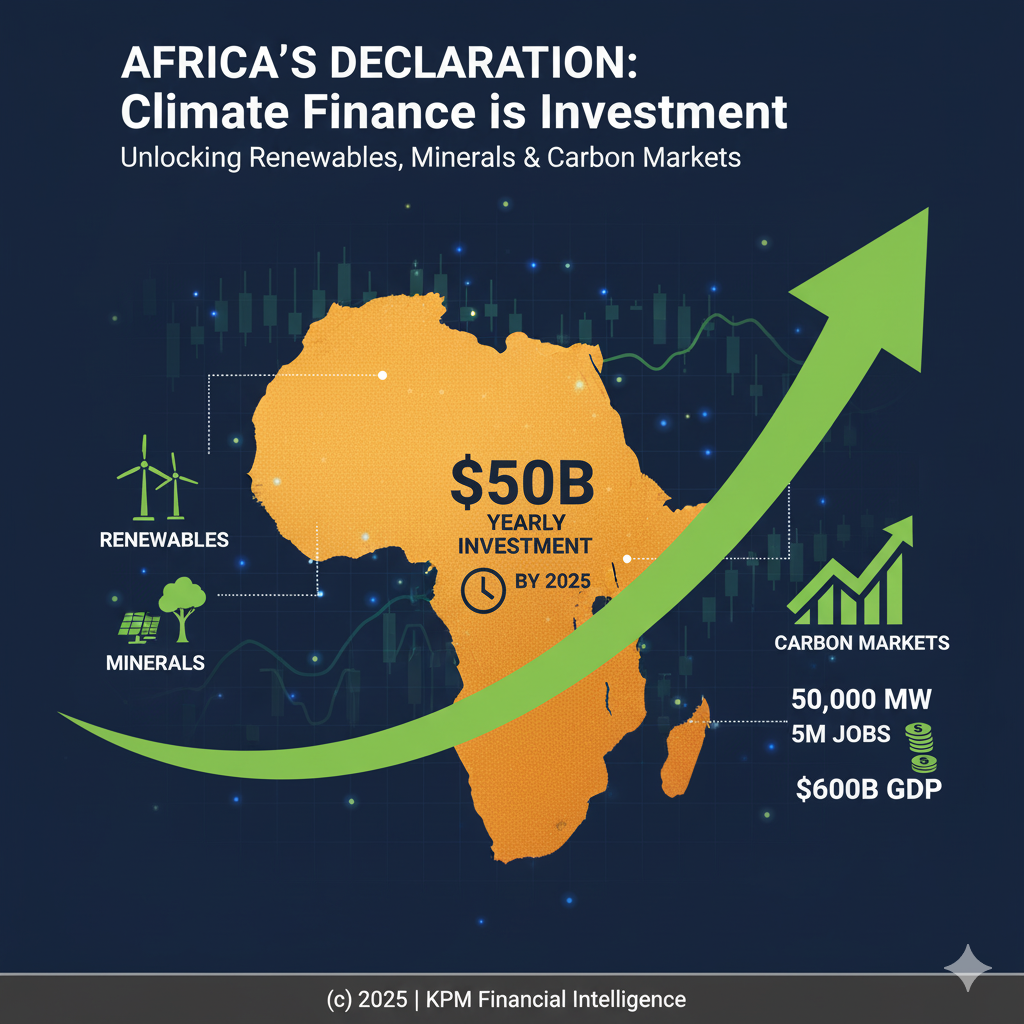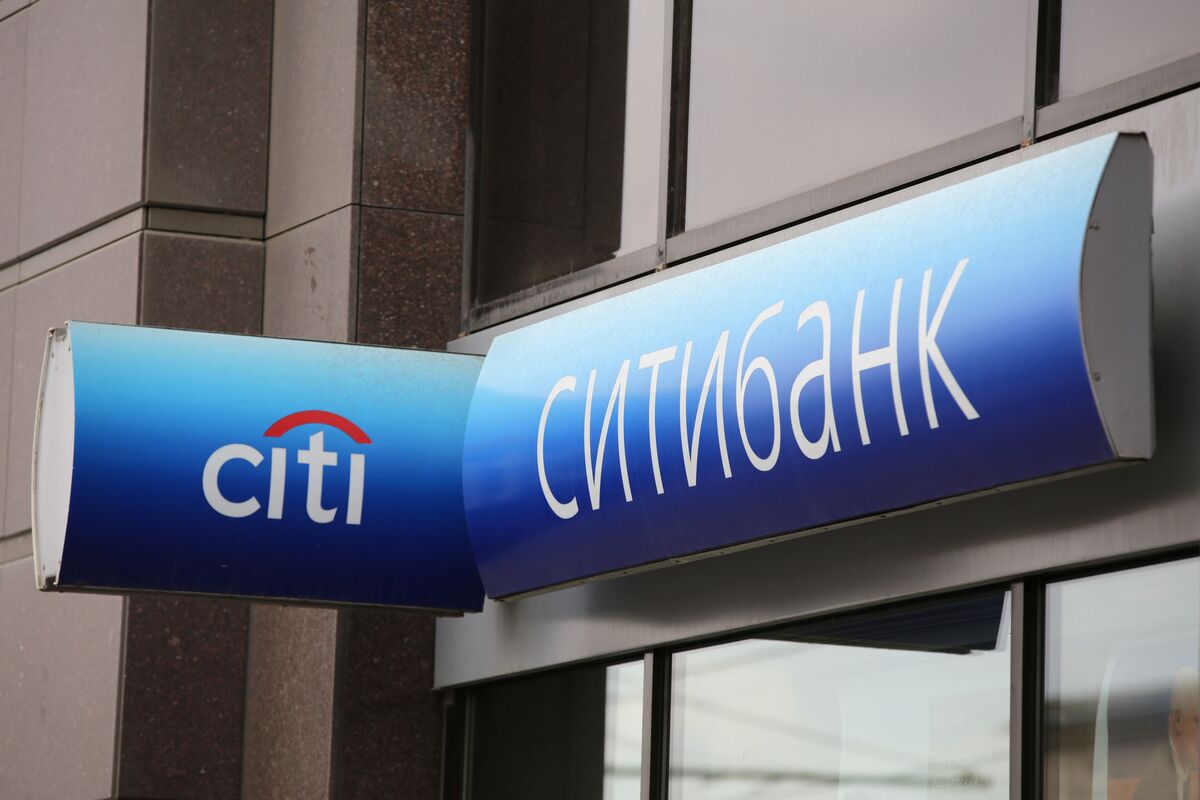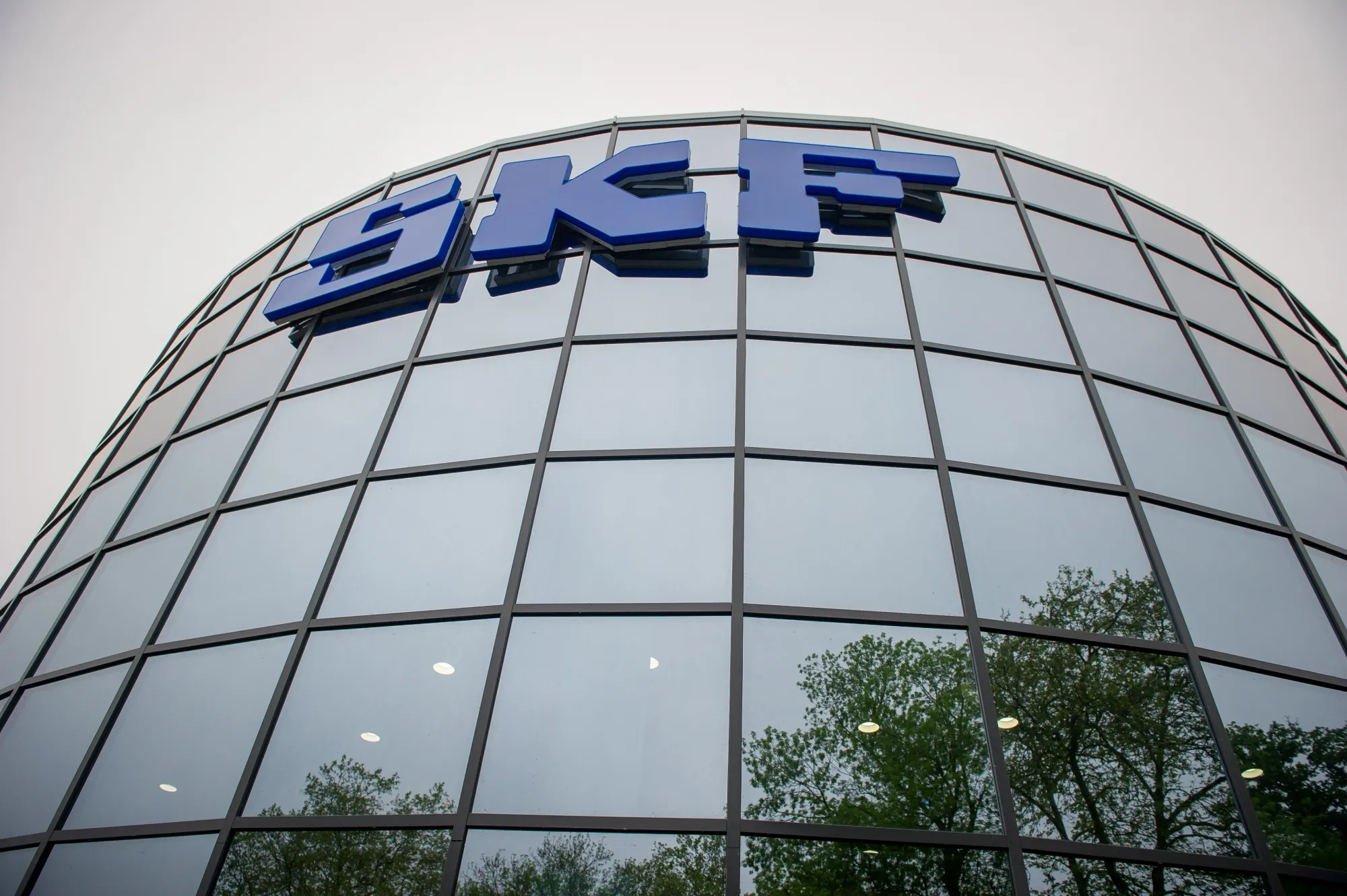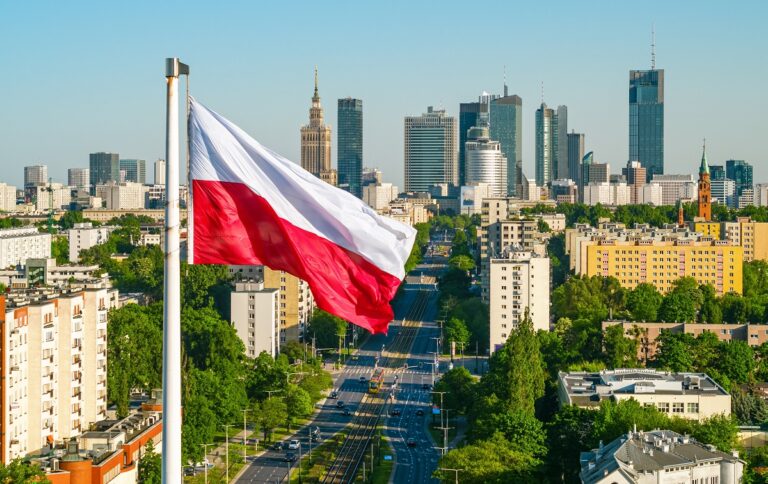Africa’s $50B Climate Finance Push: Renewables, Minerals, and Carbon Markets by 2035
Africa’s Declaration reframes climate finance as investment, seeking $50B yearly to unlock renewables, minerals, and carbon markets, adding 50k MW, $600B GDP, and 5M jobs by 2035.

From Declarations to Bankable Deals
The Addis Ababa Declaration, adopted at the African Union’s second continental climate summit, signals Africa’s determination to reposition itself not as a victim of climate change but as a global provider of solutions. At the heart of the declaration is a demand for fifty billion dollars annually in climate finance, anchored on three pillars: accelerating renewable energy to establish Africa as a green industrial power, forming a coalition on critical minerals to capture greater value from global supply chains, and protecting natural heritage as a global public good. For financial institutions, this is more than rhetoric. It is a statement of market potential that, if financed effectively, could generate transformative economic outcomes across the continent.
Africa currently contributes only four percent of global greenhouse gas emissions, yet climate-related shocks already strip between two and five percent of its GDP every year. The request for fifty billion dollars annually is therefore framed not as aid but as investment capital. What matters to banks and investors is how such flows are structured—through green bonds, blended vehicles, sustainability-linked instruments, or concessional facilities that align with ESG mandates. Africa already has a foothold in international markets: Egypt’s sovereign green bond issued in 2020 (ISIN: XS2225391729) and Nigeria’s 2017 sovereign green bond (NGERB22) demonstrated appetite for African ESG paper, while South Africa and Kenya are preparing follow-on issuances. Institutions such as the African Development Bank’s Climate Action Window, the Green Climate Fund, and the proposed African Climate Facility could anchor this capital, but investor appetite will depend on transparent governance, credible pipelines, and robust de-risking frameworks.
The scale of potential impact is significant. With an average benchmark cost of around one million dollars per megawatt of utility-scale renewable energy, fifty billion dollars could deliver about fifty thousand megawatts of new capacity annually. Over a decade, that translates into half a million megawatts—enough to power a fundamental shift in Africa’s industrial competitiveness. This infusion of energy would not only expand access but also reduce the structural bottlenecks that suppress manufacturing, trade, and services, enabling African economies to leapfrog into green industrialization.
The macroeconomic dividends are equally compelling. Using conservative multipliers, annual climate investment of fifty billion dollars could yield roughly sixty billion dollars in incremental GDP growth each year, amounting to six hundred billion dollars over a ten-year horizon. That cumulative impact is greater than the current GDP of South Africa, underscoring why climate-linked borrowing should be viewed as development-positive debt. By protecting economies from shocks and expanding fiscal space, such investment strengthens sovereign credit profiles rather than weakening them, particularly if paired with first-loss guarantees, political risk insurance, and currency hedging tools that mitigate investor exposure.
Employment creation provides another layer of return. Global benchmarks suggest that around ten jobs—direct and indirect—are created for every megawatt of renewable capacity installed. At this rate, Africa could generate half a million jobs per year and up to five million jobs by 2035. These are tangible positions across construction, manufacturing, logistics, and long-term operations and maintenance, embedding green industrialization in local economies while reducing youth unemployment pressures. Listed African banks such as Standard Bank Group (JSE: SBK, OTC: SGBLY), Absa Group (JSE: ABG, OTC: AGRPY), and Equity Group Holdings (NSE: EQTY) are already increasing their exposure to renewable portfolios, showing how domestic capital pools could be mobilized alongside international investors.
Critical minerals form the second pillar of the Addis Ababa Declaration, and their financial potential is enormous. With more than thirty percent of global reserves of cobalt, lithium, and rare earths, Africa has leverage not only to supply global markets but also to negotiate financing arrangements tied to value addition. Major mining players such as Glencore (LSE: GLEN, JSE: GLN), China Molybdenum (HKEX: 3993, SHA: 603993), Ivanhoe Mines (TSX: IVN, OTC: IVPAF), and African Rainbow Minerals (JSE: ARI) already dominate cobalt and copper flows from the Democratic Republic of Congo. If Africa can shift the narrative from raw exports to structured finance anchored in local processing, these minerals could provide both collateral and bargaining power for its climate financing strategy.
The third pillar—protecting natural heritage—may appear ecological but is in fact deeply financial. Africa holds over seventeen percent of the world’s carbon sequestration potential, yet captures less than ten percent of global voluntary carbon market revenues. With the voluntary carbon market projected to grow to fifty billion dollars by 2030, Africa could become a primary supplier of carbon and biodiversity credits. Platforms such as AirCarbon Exchange (ACX, private) and the London Stock Exchange’s voluntary carbon market (LSE: LSEG) are already exploring expansion into Africa. For banks, this opens opportunities in structuring carbon-backed securities, biodiversity bonds, and conservation-linked lending, creating new asset classes that monetize ecosystem services.
Private capital mobilization will ultimately determine whether Africa’s climate ambitions succeed. At present, climate finance flows to Africa are more than eighty percent public-sector driven, yet the continent’s institutional investors control over 1.8 trillion dollars in assets, much of it parked in low-yield domestic debt. Unlocking this capital through credible instruments and regional aggregation facilities would be transformational. International hedge funds, impact investors, and private equity players are monitoring the space, but will only commit if bankable structures and exit pathways are clearly defined. For U.S. and European investors, listed funds such as the VanEck Africa Index ETF (NYSEARCA: AFK), Global X MSCI Next Emerging & Frontier ETF (NASDAQ: EMFM), and iShares Frontier and Select EM ETF (NYSEARCA: FM) already provide broad exposure to African equities, while ESG-oriented funds like the iShares Global Green Bond ETF (NASDAQ: BGRN) and Lyxor Green Bond (Euronext: CLIM) offer complementary avenues to align portfolios with Africa’s green financing wave.
The Addis Ababa Declaration has set the tone ahead of COP30 in Brazil, but the real test will be whether these ambitions translate into bankable deals. For financial institutions, the case is clear: fifty billion dollars annually could unlock half a million megawatts of clean energy, deliver six hundred billion dollars in GDP growth, and generate five million jobs by 2035. These are not abstract pledges; they are measurable outcomes that combine financial returns with resilience dividends.
The call to action is urgent. Africa has laid out its investment case; what remains is for banks, institutional investors, and policymakers to step forward with concrete financing commitments. The choice is stark: treat Africa as a frontier of opportunity in the world’s green transition, or risk missing the continent that may hold the world’s best chance of achieving net zero. For investors seeking both yield and impact, the time to move is now.





